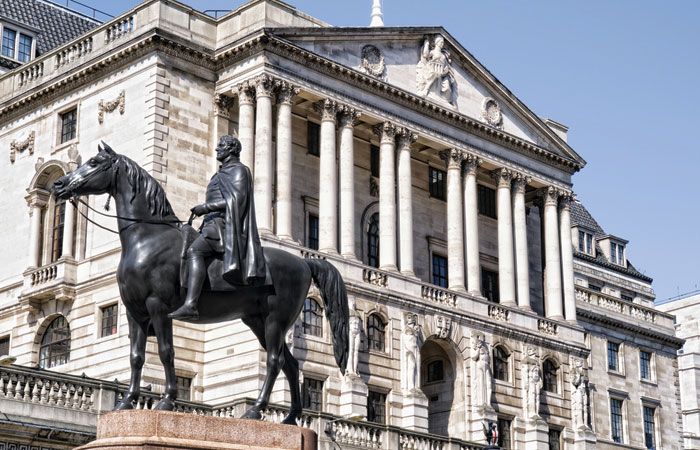
Former US Federal Reserve chair Ben Bernanke will publish his long-awaited review on how the Bank of England sets rate-setting guidance on Friday, after the central bank’s current forecasts have come under heavy criticism.
He is expected to recommend that the central bank move to a flexible set of ‘scenarios’, to forecast its projections for the economy.
The Nobel Prize-winning economist will say the Bank should scrap its current ‘fan’ forecasts and graphs, which cover mean, modal and median projections across a range of economic variables.
Bernanke’s report was commissioned by the central bank last May after it failed to predict inflation would hit a four-decade high of 11.1% and that it would remain high.
Governor Andrew Bailey came under fire from members of parliament and independent economists for allowing prices to spiral at a worse rate than the US and eurozone.
Deutsche Bank senior UK economist Sanjay Raja would welcome a move to scenario forecasting.
He says the current method “creates a complex web of forecasts for market participants and the public to digest.
“Crucially, the projections are a product of the Monetary Policy Committee’s best collective view of the economic outlook – adding more uncertainty on what internal assumptions drive the MPC’s forecasts.”
Raja adds: “The use of alternative scenarios would also allow for differing views on the committee to be reflected more formally (i.e., hawkish vs dovish risks as reflected in the current make-up of the MPC).”
Bank governor Bailey has signalled that he is open to a move to scenario forecasts.
In February, he told the Treasury Select Committee: “The question is whether there are better ways of conveying the range of views than we have at the moment.
“At the moment, we use the so-called fan chart to do some of that, but there is a very open question here, which I think we will come to in the light of Ben Bernanke’s report.”
He added: “For instance, if we were to use scenarios more—in other words, present scenarios around a forecast—would that help? . . . . Given the inevitable uncertainty around this exercise, we need to be able to convey more of the range of possible outcomes that we can have.”
In a letter, last June, the Treasury Select Committee wrote to the Bank and said Bernanke’s report should also look at whether it took into account enough views from outside the central bank.
Committee chair Harriet Baldwin wrote: “The work should also look at the transparency of the forecasting process and whether external challenge is sufficiently enabled.”
Deutsche Bank’s Raja echoes this, saying that “external stakeholders to present to the MPC on a quarterly basis”.
He points out: “This could take the form of formal briefings conducted as part of pre-Monetary Policy Report preparations, which could include thinktanks and market-based economists/strategists.
“This would allow the MPC to mark-to-market its own central projections to external stakeholders, while providing more detail on where (and why) it differs from other forecasters.”
The Bernanke Review’s full terms of reference. His report will cover:
- staff processes and analysis supporting the MPC’s policy deliberations
- the analytical framework for taking account of significant shocks and shifts on the supply as well as the demand side of the economy
- the role of the forecast in the MPC’s policy decisions and communications, including the roles of the MPC and the staff in the development of the official forecast
- the appropriate conditioning assumptions in projections, including the interest rate path on which the forecast is based
- material provided to the MPC to assist the discussion and communication of the outlook and the risks around that



